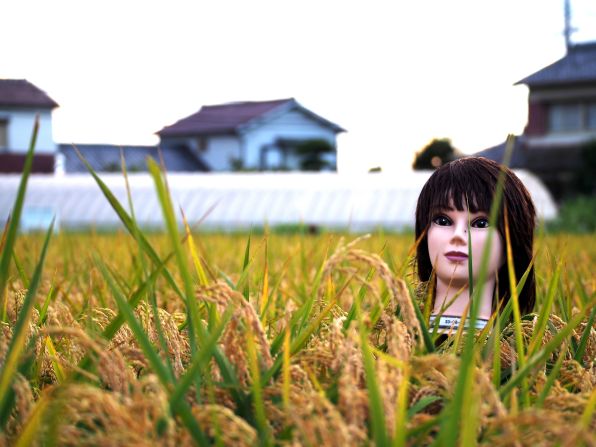
Make it go away! —
Photographer Dennis Doucet was out searching for birds in the rice paddies near his neighborhood in Kobe, Japan, when he spotted a bunch of mannequin heads appearing in the fields.

Not creeped out yet? Keep clicking. —
Discarded by local hair stylists, the mannequins are re-purposed by farmers fending off sparrows.

Stop staring! —
"As the heads become moldy or bleached by the sun, they become even more scary," Doucet writes.

Freaky sentinels —
They're most likely to be seen in mid- to late-August, positioned in fields to protect rice that's nearing harvest.

Bird watchers —
Sparrows are the greatest problem that rice farmers face, Doucet learned. "They are, however, skittish and not very bright." The sparrows, not the farmers. Short of using noisy air cannons, local land owners say the scarecrows are the most effective bird repellents.

We still love 'em. Sort of ... —
Kensuke Okada, a professor at the University of Tokyo's International Program in Agricultural Development Studies, says scarecrows are "known to be an ineffective way for protect the crops from birds, nor it is widely practiced in Japan."

Haunting dreams for generations —
Japanese scarecrows, called "kakashi," occupy a storied history in farming culture, with many legends surrounding their use in rice fields.

What's that up on the road a head? —
Nice to know everything in Japan doesn't have to peg the cute meter.

Asleep on the job —
More care is taken to put some of the hair-raising helpers in a position to succeed than with others. Like hair, for instance.

Dark visions —
The heads are particularly spooky at night, when car headlights hit them at just the right angle.

Kowai meets kawaii —
Kowai means "scary" or "creepy" in Japanese. It's the rough opposite of the familiar Japanese word kawaii, meaning "cute." With its cap at a jaunty angle, this mannequin scarecrow appears to be trying to ride the line between the two.


